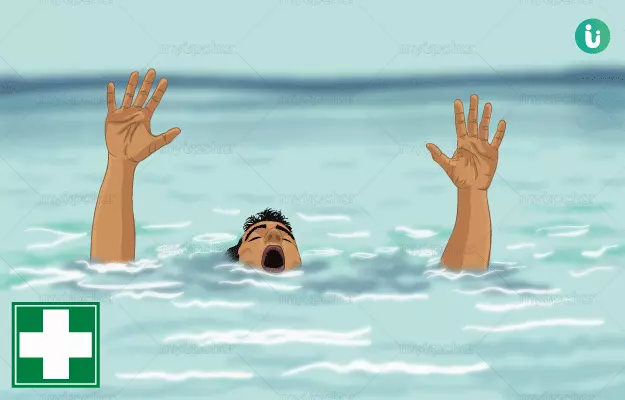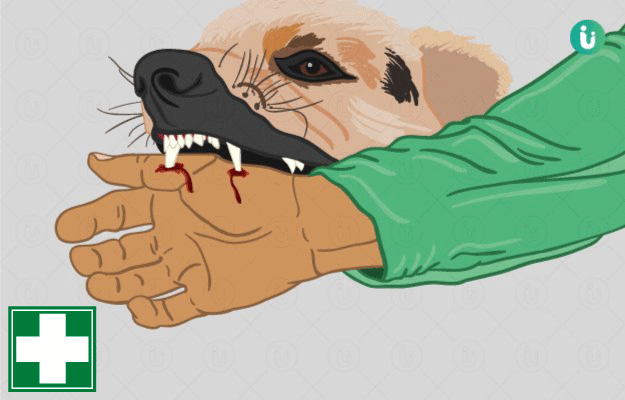Immersion of the nose and mouth in water for an extended period of time can lead to suffocation from inhibition of respiration. When water is inhaled into the upper part of the respiratory tract, spasms occur in the windpipe and larynx, causing the person to choke. The spasms relax when the water enters into the lungs; however, this causes a disruption in oxygen supply to the body. This is known as drowning or a near-drowning experience. Near drowning means that a drowning person has been rescued from going under but still needs immediate first aid and medical attention. As the drowning person is unable to take in air, oxygen levels in the blood drop and carbon dioxide, which can not be expired, builds up. The alteration in blood chemistry results in the cutoff of oxygen supply to the brain, as well as the pH of the blood becoming acidic. Vital tissues like the brain and the heart can die quickly due to deprivation of oxygen and result in the death of the patient. Additionally, drowning accidents in large water bodies can produce extreme hypothermia, or fall of the body’s core temperature, making matters worse. Proper precautions are necessary when spending time near water bodies and prompt first aid in case of a drowning accident can often save lives.
99% Savings - Buy Just @1 Rs
X

- हिं - हिंदी
- En - English
- Treatment
-
- Skin Issues
- Acne
- Fungal Infection
-
- Hair Problems
- Hair Growth
- Hair Dandruff
- Self-Analysis
-
- Chronic Diseases
- Diabetes
- Heart Care
- Weight Loss
- Sleep Support
- Liver Care
- Stress & Anxiety
- Our Brands
- Doctor Consultation
- Medicine A-Z
-
Health A-Z
-
- Treatments
- Home Remedies
- Herbs
- Surgery
- Lab Test
- Therapy
- First Aid
- Ayurveda
- Homeopathy
-
- Yoga And Fitness
- Fitness
- Yoga
- Weight Loss
- Weight Gain
-
- Other Topics
- Baby Names
- Beauty
- Healthy Foods
- Tips
- Health News
- Pet Health
- Men Health
- Medical Cannabis
- Login / Sign Up























